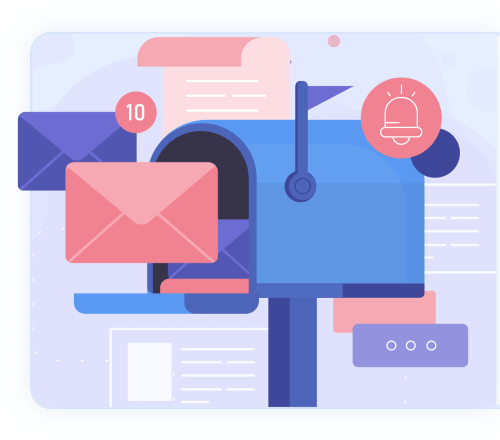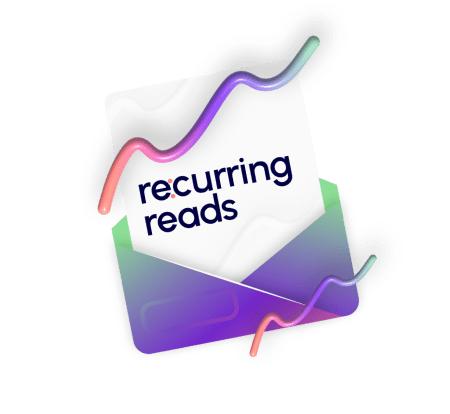Perfect Customer Offboarding: Learn from Churn, Prevent Bad PR, and Make Win-Backs More Likely
What are the secrets behind a perfect customer offboarding? Read on to know how best to prevent bad PR and make the win-backs more likely in this blog.

There is no exact definition of a perfect customer offboarding, but it can help to learn from the churn you experience. Plus, better customer offboarding can help you prevent bad PR and enable more win-backs. Customer offboarding includes several steps to cancel a customer account as they disengage from your products or services. While little focus is typically put into offboarding, it can be an opportunity to encourage advocacy and retention if done right. In this blog, we’ll take a closer look at the opportunities you can seize when offboarding customers.
What is Customer Offboarding?
While there is often a focus on customer onboarding, which begins the relationship between a customer and a company, customer offboarding is not often the focus. Once considered the end of the interaction between the company and the customer, it is now also used to define the end of a single transition making re-purchase a real possibility and the offboarding much more strategic.
How to Create the Best Customer Offboarding Experience?
1. Understand the Reasons for Losing the Customer
Send an acknowledgement e-mail
Out of respect, it’s important to acknowledge your customer’s request to end business with you. Waiting days or weeks to hear back from you can give them a bad final impression. Whether they hear from you or not, they’ve made up their mind to unsubscribe. However, acknowledging them and starting the offboarding immediately may leave them with a good impression, increasing their chance to come back or to recommend your product.
Get feedback about why they are leaving
Getting feedback from offboarding customers will help you understand why you experiencing churn and to make changes in the future. Some ways to get feedback include:
- E-mail: Send a quick and uncomplicated email to ask for feedback about their reasons for discontinuing their relationship with your company. Here is an example from Groove:

- Survey: Another option is to send a survey to collect customer feedback to give you a better understanding of their reasons for leaving. Surveys can also be embedded in the cancellation page itself.

- Phone Call / Meeting: Calling customers may give them an extra personal touch. You can call and ask for immediate feedback or set a time to call. Going the extra mile may make a difference if they decide to come back.
2. Segment Unsubscribing Customers into Two Groups
- Regrettable Churn: This group includes customers who leave you for reasons that are under your control. This may include factors like your product not catering to their specific needs. Additionally, it could be due to the inconsistencies of the product as it is described on your site and what they experience in reality or because of experiencing too many unfixed bugs.
Whatever the reason, regrettable churn helps you understand what your clients want from you. Taking the opportunity to make improvements based on the knowledge you gain from customers in this group can help you retain future customers. - Non-regrettable Churn: These are the customers who leave you for the reasons that are not under your control. Some of the reasons include bad fit, end of a particular project, or experiencing growing pains when the company switches directions.
Analyzing non-regrettable churn helps you understand how your customer used your product and what they determined were benefits, but is out of your control.
3. Try One Last Effort to Reduce Churn
- Increase the Incentives: Sometimes, a discount or a promo code might not save you from a churning customer. That is when it is necessary to rethink your incentive strategies. For instance, you can try changing or increasing the frequency of your deliveries or changing some of your existing features and improving them according to feedback you have received.
- Walk in your Customers’ Shoes: Figuratively, of course. Try to see the situation from your customer’s point-of-view so you can easily identify the gaps. Document and share your findings to ensure seamless collaboration across teams and the ability to make these discoveries actionable.
- Test and Implement: The feedback you collect is only useful if you do something about it. Make improvements based on the gaps you discover and the feedback from your customers and test them before implementing permanently.
4. The Perfect Customer Offboarding Checklist
- Reason for Cancellation?
Find out why they are leaving so you can use this information to reduce churn in the future.
- Was the Contract Broken?
For the legal and financial next steps, review the original contract of agreement that had been signed between the two parties to determine if there is a termination clause that needs to be met or revised.
- Project Documents Sent?
Send the customers an annotated file bearing all their key documents in accordance to their projects, clients’ needs or requirements, if any.
- Final Payment Received?
Immediately collect any pending or remaining invoice or set up a payment plan.
- Thank Them for Their Patronage
Thank them and show your appreciation. Thank them for any feedback and let them know you will put it to good use.
5. Learn from Customer Feedback
- Monitor Churn Indicators: If there is one customer who is beginning to churn, chances are they are not alone. Consider setting up churn triggers that notify you when a customer shows the signs of possible churn. This will give you the opportunity to reach out to them before it is too late and find out what the issue is and take care of it before it is too late.
- Leverage Technology: Collect feedback and monitor churn automatically by leveraging technology so you will always stay ahead of potential issues.
- Train the Customer Service Team: Ensure the staff who communicate directly with customers are well trained in people skills and the product. Have them graciously collect any and all feedback.
6. Remember the Peak-End Rule
The psychological theory called the Peak-End Rule introduced by Nobel laureate Daniel Kahneman asserts that people judge an experience based on how they feel at two specific situations: one at the peak, or the most intense point, and the other at its very end. For example:

In other words, by creating a memorable offboarding process, you can actually rectify any of the negative feelings that your customers ever had about your product.
How to prevent bad PR?
- Understand Why: Sometimes customers simply don’t need your product anymore. However, other times there was an issue that could have been avoided. When this occurs, it’s important to do something about it. According to a report by Reputation Refinery, 96% of dissatisfied customers will tell about 15 other people about their experiences. Understand why there is an issue and be sure to fix it before you receive bad PR.
- Apologize, if Warranted: Whether you have a customer that may be willing to come back or not, if they have unsubscribed because of something that could have been done better, it’s best to apologize. Apologies can go a long way.
- Ask Them for a Brief Offboarding Call: Surveys are very helpful, but a call can be even better to get all of the answers you need from a churning customer.
- Make Cancelling Easy: There will always be some customers who would not come back to you no matter what you do. Others may come back if everything goes smoothly despite the fact that they are leaving. It’s best to treat the phase of customer offboarding similar to that of customer onboarding.
- Provide Easy Access to Their Key Documents: To ease the offboarding process, make sure that you take inventory of all the key documents that were delivered to the customers over the course of the relationship, including usernames and passwords. This will not only make offboarding easy for them, but can make coming back that much easier.
- Send them a Sincere “Thank You”: A simple Thank You can go a long way. Plus, it can provide you with an excuse to get back in touch and maintain a healthy relationship even if you are not doing business together. Often, the ultimate success is tied to the strength of your relationships after the customer offboards.
That’s a Wrap
Following these friendly customer offboarding processes can help you not only avoid bad PR, but also pave the way for more win-backs. A successful company will always have appropriate win-back strategies and treat its customers well even throughout the offboarding phase. A positive customer offboarding experience will help your customers avoid feeling like they are in a hostage situation and has the potential for a win-back instead.
You might also like:
- Best Customer Win-back Strategies to Get Your Lost Customers Back – Learn these six battle-tested Customer Win-back Strategies to get your lost customers back.
- To understand how SmartKarrot can helps SaaS companies keep and grow loyal customers, Request a Demo.









